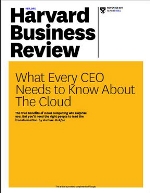Getting to Ten in Ten
The other day I saw a video and presentation called Ten in Ten – Ten Technology Trends that Will Change the World in Ten Years by Dave Evans, the Chief Futurist at Cisco. Standing in a unique position to view in detail what some of us only hear about in bits and pieces, Dave lays out a mind-reeling mural of the future. The video is almost a year old now, and it may well take us the nine remaining years to ponder and digest its implications.
The names of the trends give a glimpse of what we can expect: The Zettaflood, The Next Dimension, The Power of Power, and more. Reading through the list (see below), it occurred to me that the first five of these trends all have something in common–they all point in some way to the value of real-time cloud computing:
1. The Internet of Things is Already Here
Electronic devices, sensors, and all kinds of everyday objects with RFID tags connected to the Internet now outnumber people who are connected by 2 to 1. By 2020 there will be more than 6 connected devices per person. Real-time data from these devices and sensors flowing through the cloud can serve as a world-wide nervous system.
2. The Zettaflood Is Coming
Human efforts, combined with an avalanche of incoming data from all of these devices will soon produce zettabytes of information. One zettabyte = 1 trillion terabytes, or 1021 bytes. Much of this information will be needed instantaneously, and discarded as quickly, making real-time access that much more important.
3. Wisdom of the Cloud

4. The Next Net
The continuing trend towards higher-speed, higher-reliability networking can only enhance today’s technologies for cloud-enabled real-time data connectivity, making them even more robust and reliable than they are today.
5. The World Is Flat and So Is Your Technology
As concerned citizens in Japan were able to tweet out earthquake reports several minutes ahead of the US Geologial Survey, Evans predicts that we can expect the convergence of broadband, smart phones, and Internet TV to reach a point where everyone becomes a reporter. He says, “You’ll be broadcasting to people’s televisions, in their homes, in real time.”
Exactly how these trends might shape our world in the coming ten years remains to be seen. In 2021 we’ll be able to sift through the archives and dig up the presentation—if it hasn’t gotten completely lost in the zettaflood or been made inaccessible by ever-more-efficient data storage hardware—and see if these predictions came true. Meanwhile, to start moving in that direction, we’ll keep our focus on real-time applications for cloud computing.
| Trends | Implications |
| 1. The Internet of Things is Already Here | Things used as data sources |
| 2. The Zettaflood Is Coming | are contributing staggering amounts of information, |
| 3. Wisdom of the Cloud | increasingly available on the cloud |
| 4. The Next Net | over a high-speed network, |
| 5. The World Is Flat and So Is Your Technology | moving from near time to real time |
| 6. The Power of Power | and enabled by low power consumption, |
| 7. It’s All About You | which can enhance our lives through innovations like brain-machine interfaces, |
| 8. The Next Dimension | products on demand, |
| 9. Another Family Tree | advanced robotics, |
| 10. You…Only Better | and a high-tech leap in the evolution of the species. |
| Source: Ten in Ten on CiscoLive, July 12, 2011 |
 A recent
A recent  Since cloud computing is new and unknown, it is natural that these questions arise. For answers, we turn to seasoned travellers who have explored the new terrain and who also understand our concerns. Last week we mentioned one such specialist,
Since cloud computing is new and unknown, it is natural that these questions arise. For answers, we turn to seasoned travellers who have explored the new terrain and who also understand our concerns. Last week we mentioned one such specialist, 